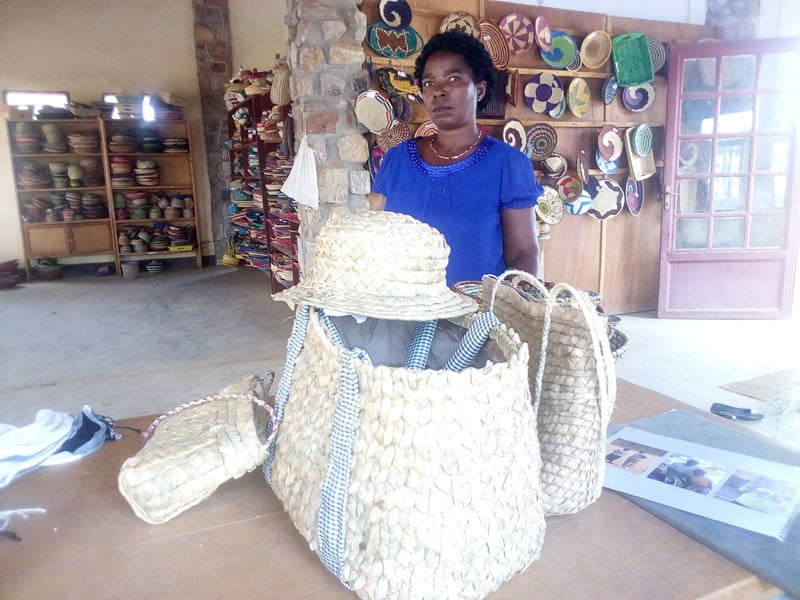How a Bugesera coop cleaned lakes of water hyacinth to handicraft

The Rwandan Environment Protection cooperative known as COVAGA (Cooperative de Vannerie de Gashora) based in Gashora sector/ Bugesera District is earning a lot from various handicrafts produced from water hyacinth plants.
Research indicates that water hyacinth is the fastest growing free-floating aquatic plant. It can even grow more than 1.5 meters above the water level under sufficient nutrient supply and expand to twice in amount in two weeks
It’s high reproductive capacity threatens the aquatic biodiversity by impeding water flows, thus creating blockages that can paralyze fishing , interfere with navigation, crop irrigation and pose other many other environment threats.
Locally known as “amarebe” , COVAGA cooperative members are removing those plants from lakes in the region which resulted in the cleanness of Akagera River Bank , Kanyonyomba river , Lake Rumira and Lake Mirayi which were almost totally covered and made fishing impossible.
Perusi Mukamihigo, the vice president of COVAGA, mentioned that their inspiration came when they realized that fishing has failed in their local lakes due to over coverage of the water hyacinth plants.
We started 2006 with 63 membership now only two have left and now counting 60 women and one man and until now we are still collected these plants, for the first five years we managed to clean up almost all the lakes mentioned above and the fishing was resumed successfully.
When water hyacinth was over, they managed to look for other plants like spear grasses and bamboos to sustain their handicrafts activities.
“But after sometimes, we realized that the water hyacithn has grown back in the water especially at Akagera River Banks. We are always surprised of where these weeds come from and how fast they expand,” she said.
How handicrafts from water hyacinth works
Mukamihigo said that with the support from the district they acquired short training in handicraft and as soon as they finished they kicked off their project.
“We hire a boat from local fishermen, which facilitate our movements throughout the lakes to collect water hyacinth until we are exhausted .when we reach our destination we put them in clean dry and sunny environment for seven days to dry .When they are dry we proceed with steps of shaping them and go on with weaving products depending on available orders,” she explains.
With the support from Gahaya Links Company, a Rwandan handicraft company dedicated to women’s economic, Covaga Cooperative’s products get to the local and foreign market through exports but also sometimes they receive foreign tourist having visits in their respective neighborhood.
Their products mainly include handbags (ranging from rwf 7-10 thousands), sandals (rwf 5 thousands), plates (rwf 7000), and caps (rwf 5000)
Mukamihigo argued that over 10 years each member of the cooperative witnesses rewards of their hard work from collecting those water hyacinth to reuse them for making a variety handicrafts products.
“Our main consumers are foreign tourists. They really love the uniqueness of our products.” When we have a big order we can produce over 150 products per month, with an income of ranging from 1.8 to ten million. We equally share the income generated and each one leave 10% that we save on our account for further activities.
Maria Mukamusoni, one of the members of the cooperative said that since entering the cooperative her life has never been the same. Mainly, she feels proud of their contribution in aquatic life conservation but also came up with an innovative poverty alleviation project.
“This activity has transformed our lives as rural women. The majority of us used to solely depend on men’s income but now we have become active contributors to our family economy. Mainly, we able to pay my mutuelle de santé contribution on time and with the rest contribute to other basic needs or family projects,” she said.
COVAGA cooperative members also boasted that their project, earned a worldwide recognition in 2011 under the National Energy Globe Award issued in Austria, as one of the 3 nominated best projects worldwide for the Energy Globe Award in the category “Water”, from among almost 1000 entries presented by 105 nations.

